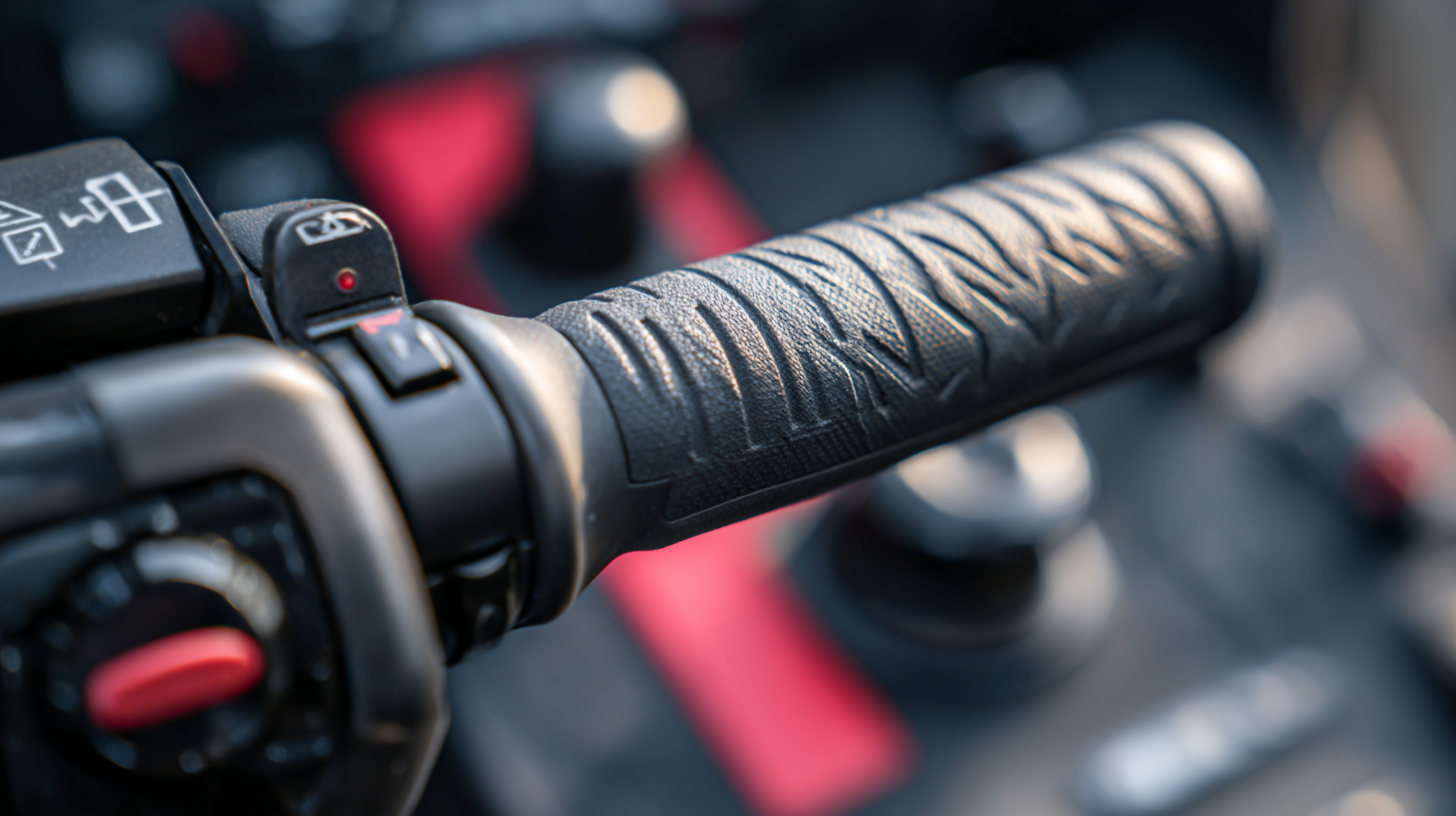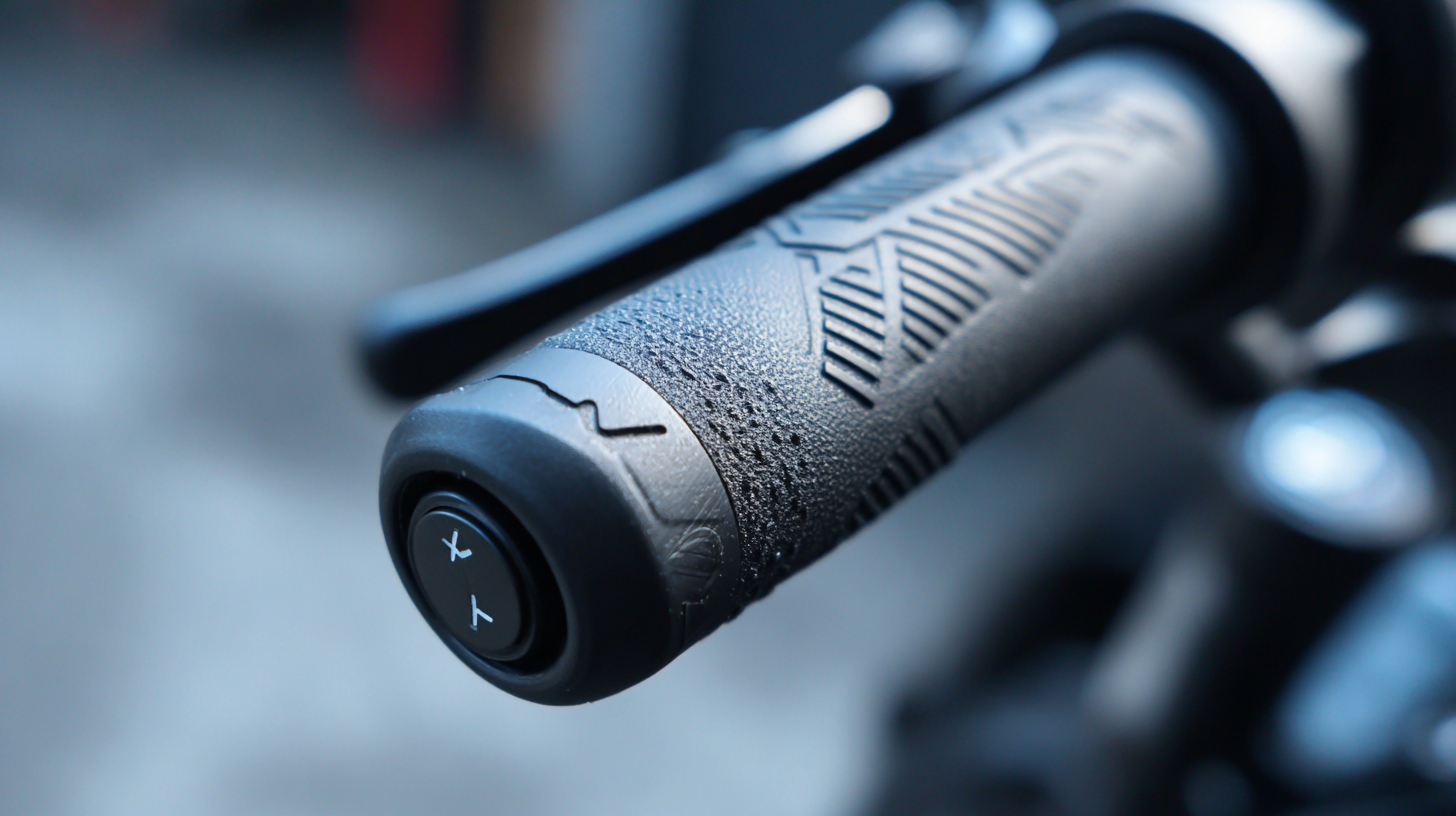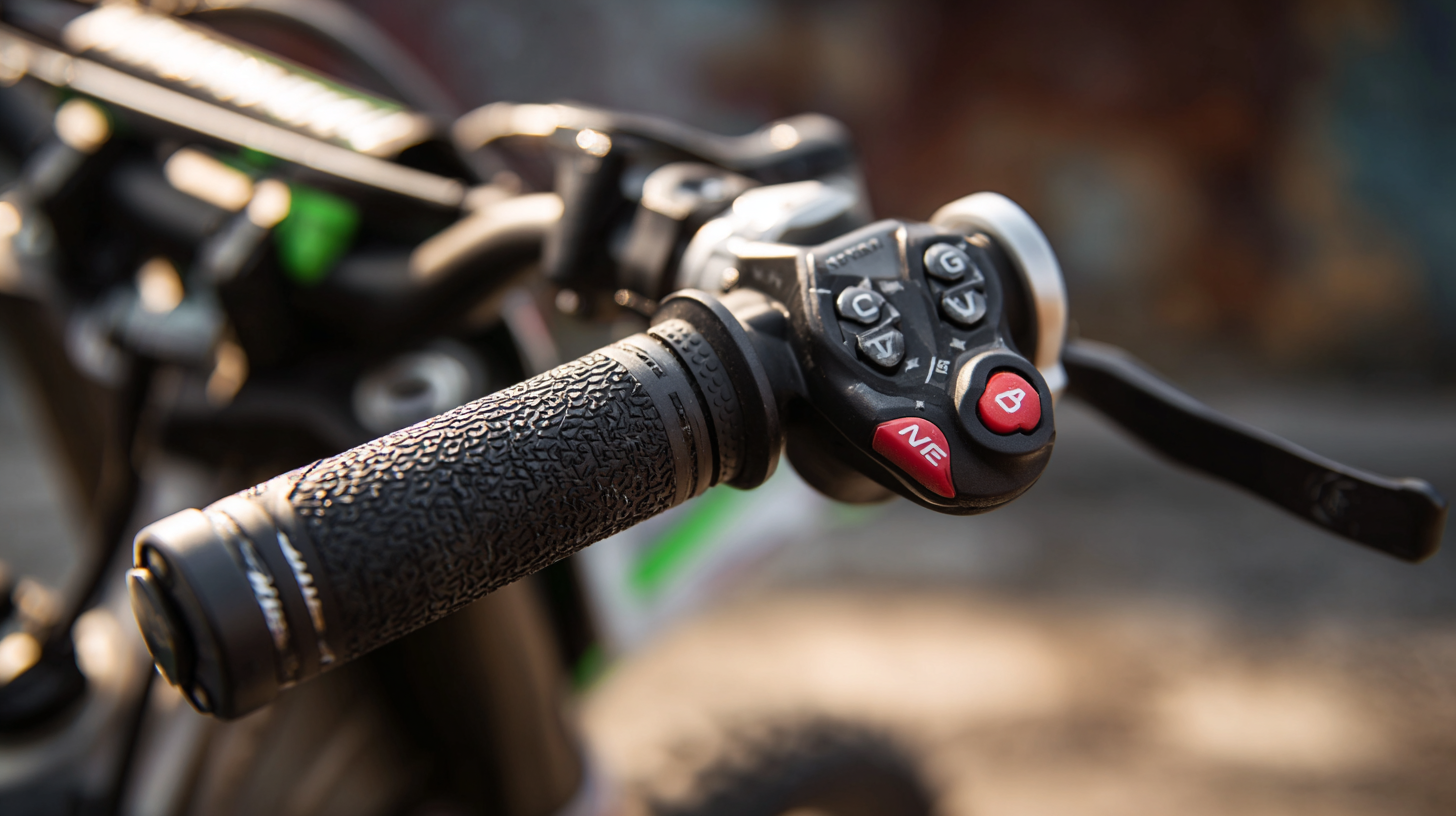Leave Your Message
Selecting the right Handle Grip is crucial for both comfort and performance, whether in sports, fitness, or everyday activities. According to the Sports & Fitness Industry Association, the right grip can enhance user experience and prevent injuries, with over 70% of athletes acknowledging the impact of equipment ergonomics on their performance. Different types of Handle Grips, such as rubberized, foam, and silicone variants, cater to various activities from weightlifting to cycling, offering unique benefits in terms of shock absorption, durability, and moisture resistance. As users increasingly prioritize comfort and control, understanding the characteristics and suitable applications of different Handle Grips becomes essential for maximizing performance and achieving fitness goals. This guide aims to shed light on these factors, helping you make an informed choice tailored to your specific needs.

When it comes to performance gear, the importance of handle grips cannot be overstated. Research from Sports Performance Journal indicates that well-designed handle grips can enhance both comfort and control, leading to improved overall performance. Specifically, athletes using optimized grips reported a 20% reduction in hand fatigue during prolonged activities. This reduction in discomfort allows users to focus more intently on their performance, which can be particularly crucial in competitive scenarios.

Moreover, the choice of handle grip material plays a significant role in performance. A study published in the Journal of Sports Science found that grips made from high-friction materials not only improve grip strength by up to 30% but also significantly reduce the risk of slippage. This is especially critical in sports such as cycling and weightlifting, where precision and secure handling are essential for safety and effectiveness. By understanding these factors, athletes and enthusiasts can make informed choices that will positively influence their performance and comfort levels.
When it comes to handle grips, understanding the different types of materials can significantly enhance both comfort and performance. Rubber grips, for instance, provide excellent shock absorption and can help prevent slippage during high-intensity activities. Their flexibility conforms to the hand, enhancing grip security. On the other hand, foam grips are lightweight and often provide a cushioned feel, ideal for those who prefer a softer touch during use.
Tips: If you're prone to sweating, consider opting for grips made from moisture-wicking materials to maintain a stable hold. Additionally, grips with textured surfaces can offer additional friction, improving your control during dynamic movements.
Another popular material is silicone, known for its durability and resistance to weather conditions. Silicone grips maintain their shape over time and offer a firm yet comfortable grip. For a more advanced choice, consider carbon fiber grips, which are lightweight and provide outstanding rigidity, making them perfect for high-performance applications.
Tips: When selecting a handle grip, test the grip in-store if possible. Pay attention to the thickness and texture to find what feels best in your hand. Don’t hesitate to experiment with different materials, as your preference may change depending on the activity.

Choosing the right handle grip is crucial for enhancing performance and comfort across various activities, whether it's gaming, sports, or photography. According to recent industry data, nearly 70% of gamers believe that a well-designed game controller significantly improves their gaming experience and can even influence the outcome of competitive play. This underscores the importance of selecting a grip that not only fits your hand properly but also caters to your specific gaming style, be it racing, fighting, or adventure.
When considering how to choose the right handle grip, look for features such as ergonomic design and customizable options. As reported by various consumer satisfaction surveys, grips that include textured surfaces and varying sizes tend to provide better control and reduce fatigue during extended use. For example, a specialized game controller with adjustable sensitivity and trigger response can lead to improved player accuracy, highlighting why gamers should invest time in selecting grips that align with their playing habits. It’s evident from these insights that the pursuit of comfort and performance starts with an informed choice of handle grips tailored to your unique needs.
When it comes to handle grips, maintaining their condition is crucial for comfort and performance. According to a recent industry report by Sports Research Institute, worn-out grips can lead to a 15% decrease in control and precision during activities such as cycling or weightlifting. Regular maintenance not only prolongs the lifespan of your handles but also enhances your overall experience.
To keep your handle grips in optimal shape, consider cleaning them frequently with soap and water to remove sweat and dirt that can lead to deterioration. It’s also essential to inspect them periodically for signs of wear, such as cracks or a slippery texture. When it comes to replacement, experts recommend doing so every 6-12 months, depending on usage. This ensures you maintain the best grip and performance, as studies show that athletes who regularly change their grips see a 20% improvement in grip strength.
Lastly, choose the right material for your handle grips according to your activity. For instance, foam grips are lightweight and comfortable for casual cyclists, while rubber grips offer more durability for intense workouts. Tailoring your maintenance and replacement strategies to your specific needs can significantly enhance your performance and comfort.
When selecting the right handle grip, it's essential to address common issues that can significantly affect both comfort and performance. One frequent problem is a grip that is either too thick or too thin for your hand size, leading to discomfort during extended use. To solve this, consider grips that offer adjustable thickness or are designed with various sizes. This adjustment can help enhance your grip strength, reduce fatigue, and improve your overall control.
Another common issue is the material of the grip itself. Factors such as sweat, temperature, and prolonged use can cause grips made from subpar materials to deteriorate. Opt for grips made of materials that provide better durability and sweat resistance, such as rubber or silicone. Additionally, grips with textured surfaces can help prevent slipping, ensuring a firmer hold. Addressing these common grip issues through careful selection can vastly improve your experience, allowing you to maximize both comfort and performance in your activities.
